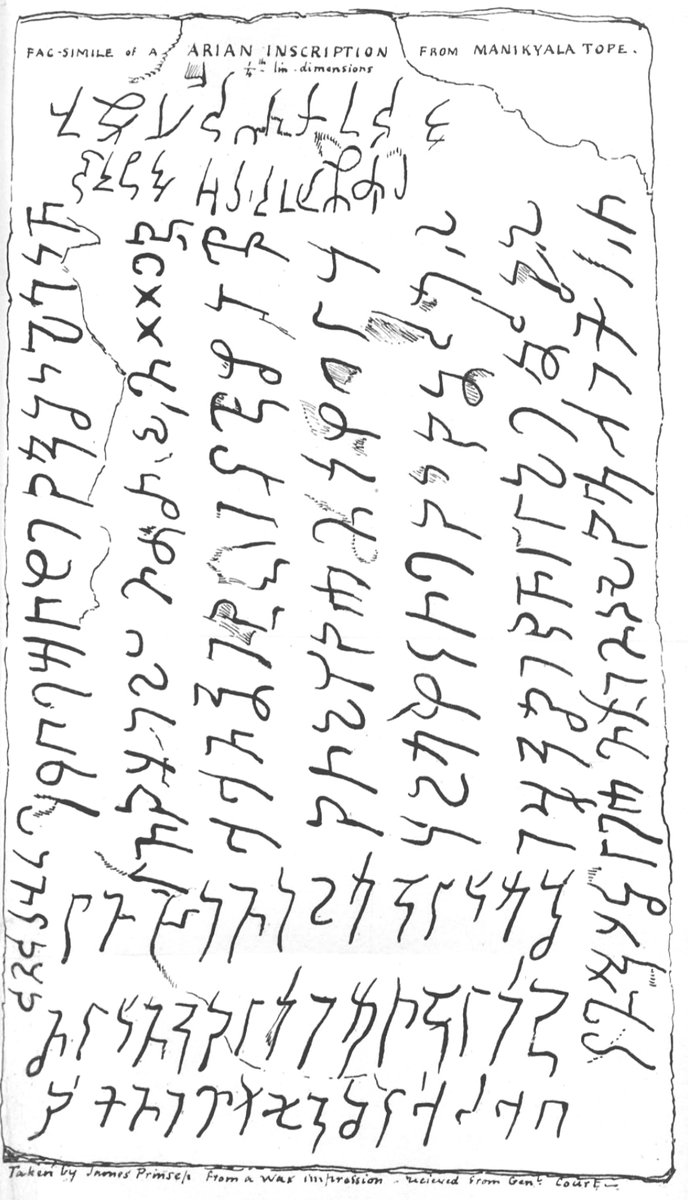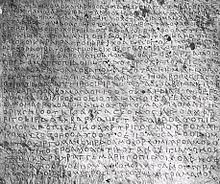#Kanishka I was, the greatest, and certainly the most famous, of the #Kushan kings.
He is known, from the combined testimony of the literary, epigraphic, and numismatic sources, to have ruled over an extensive dominion extending from Bihar in the east to #Khorasan
@atalbrave https://twitter.com/AfghanHistorian/status/1160132426905063424
He is known, from the combined testimony of the literary, epigraphic, and numismatic sources, to have ruled over an extensive dominion extending from Bihar in the east to #Khorasan
@atalbrave https://twitter.com/AfghanHistorian/status/1160132426905063424
The dates and findspots of some of the inscriptions of #Kanishka I are interesting:
#Kosam inscription dated year 2,
#Sarnath inscription dated year 3,
#Mathur¹ inscription dated year 4,
#Suivihar inscription dated year 11, and
#Manikiala inscription dated year 18.
#AFG
#Kosam inscription dated year 2,
#Sarnath inscription dated year 3,
#Mathur¹ inscription dated year 4,
#Suivihar inscription dated year 11, and
#Manikiala inscription dated year 18.
#AFG
Kanishka I, belonged to the Little #Yüeh-chih branch settled in Tibet, entered #India through #Kashmir.
He carved out a principality for himself somewhere in #UttarPradesh, sometime after the death of V’ima #Kadphises.
He carved out a principality for himself somewhere in #UttarPradesh, sometime after the death of V’ima #Kadphises.
He then extended his sway towards the west and the northwest.
However, the recently discovered #Rabatak inscription #SurkhKotal shows that he was, in fact, the son and successor of V’ima Kadphises.
Kanishka I attained several military successes in the east.
However, the recently discovered #Rabatak inscription #SurkhKotal shows that he was, in fact, the son and successor of V’ima Kadphises.
Kanishka I attained several military successes in the east.
According to the OErîdharmapiþaka, he invaded þatliputra.
When he returned to his capital, #Purushapura ( #Peshawar) from #Magadha, he carried away with him, the begging bowl of the #Buddha, a magical cock, and the Buddhist scholar, #Aoevaghosha.
When he returned to his capital, #Purushapura ( #Peshawar) from #Magadha, he carried away with him, the begging bowl of the #Buddha, a magical cock, and the Buddhist scholar, #Aoevaghosha.
The discovery of his coins in #Bengal and #Orissa should, however, not be taken as indicative of his sway over these territories, in the absence of any corroborative evidence.
According to the Rajataraógiòî of Kalhaòa, #Kanishka I conquered #Kashmir.
According to the Rajataraógiòî of Kalhaòa, #Kanishka I conquered #Kashmir.
Hiuen-tsang refers to his authority over #Gandhara, and to his capital at #Purushapura (modern #Peshawar).
The OErîdharmapiþaka refers to his expedition against the #Parthians, in which he is reported to have achieved success.
The OErîdharmapiþaka refers to his expedition against the #Parthians, in which he is reported to have achieved success.
The most notable achievement of Kanishka I was his subjugation of the central Asian provinces of #Kashghar, #Yarqand, and #Khotan.
These successes of the #Kushan ruler towards the north made the Chinese wary of his intentions.
These successes of the #Kushan ruler towards the north made the Chinese wary of his intentions.
#Pan-chao, the general of the #Chinese emperor, Ho-ti (89-105 AD), started making preparations for an invasion of the #Kushan empire.
Alerted by this, Kanishka I proclaimed his equality with the Chinese emperor by demanding his daughter in marriage, and assumed the title of #devaputra (son of god), the Indian equivalent of #t’ien-tzu (son of heaven), the title of the #Chinese emperor.
Pan-chao regarded this as a challenge to his emperor. Kanishka I dispatched his viceroy, Hsï, at the head of 70,000 horsemen, across the #Taghdumbash #Pamir to give battle to Pan-chao.
This expedition was, however, unsuccessful due to the hardships of the mountainous terrain.
According to a legend, Kanishka lamented this failure about the time of his death.
Kanishka I appear to be a devout #Buddhist, who, as per the testimony of #Hiuen-tsang and #Alberuni,
According to a legend, Kanishka lamented this failure about the time of his death.
Kanishka I appear to be a devout #Buddhist, who, as per the testimony of #Hiuen-tsang and #Alberuni,
got a grand monastery constructed at #Purushapura. He is associated with the Fourth Buddhist Council, which he is said to have convoked on the advice of #Pnroeva.
In this Council, #Vasumitra acted as the president, and Pnroeva, as vice-president.
In this Council, #Vasumitra acted as the president, and Pnroeva, as vice-president.
According to most of the traditions, the Council met at #Kuòðalavanavihara at #Kashmir, but some sources would have us believe that it was held in #Gandhara, or at #Jalandhara.
The Council prepared the Vibhashaoeastra commentary on the #Tripiþaka.
The Council prepared the Vibhashaoeastra commentary on the #Tripiþaka.
Although #Kanishka is generally regarded as a #Buddhist, the deities, from varied pantheons, appearing on the reverse of his coins, seem to show ‘a sort of religious eclecticism’.
@atalbrave
@atalbrave

 Read on Twitter
Read on Twitter










